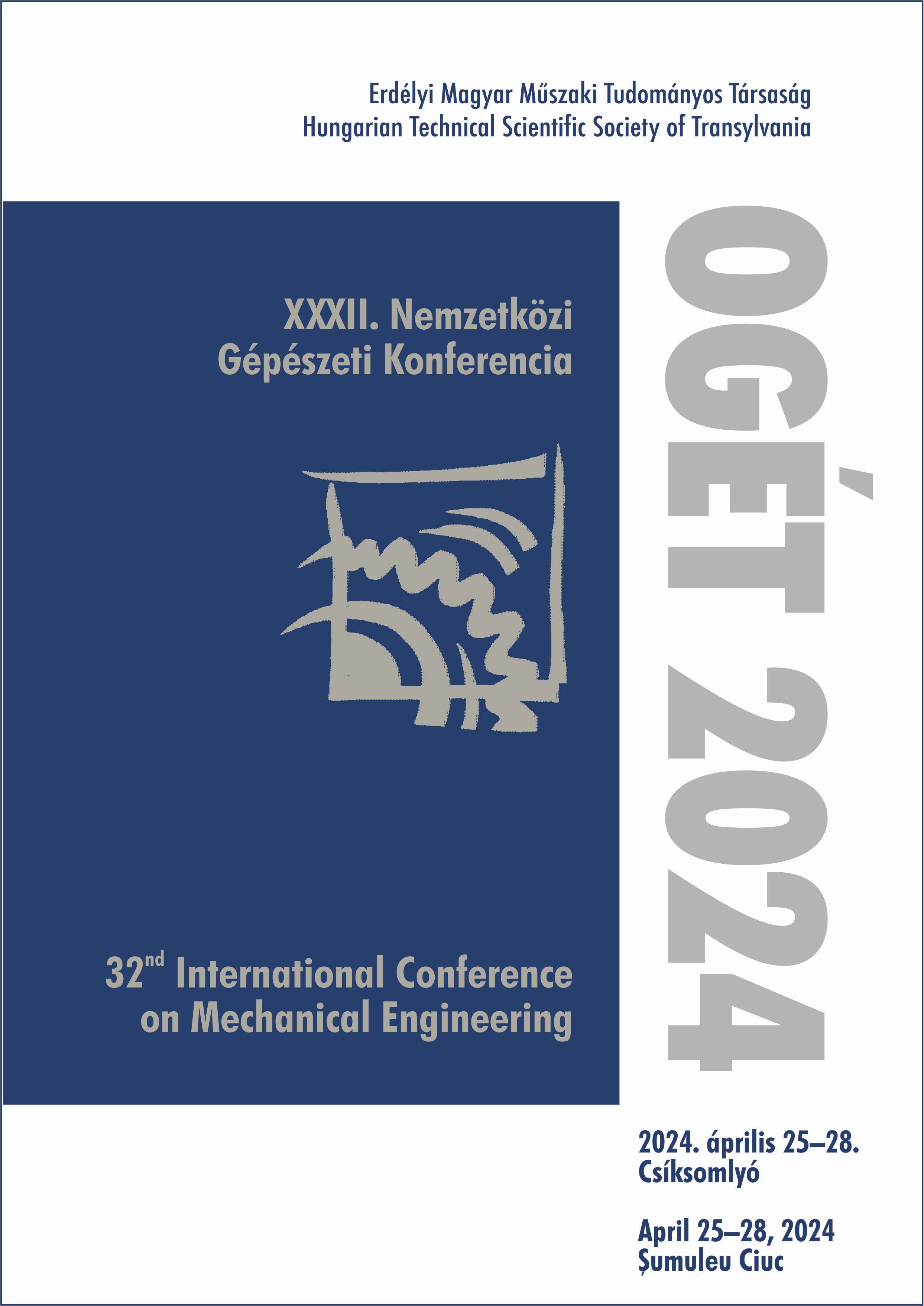Növényi alapú polimer biokompozitok előállítása és vizsgálata
Preparation and investigation of plant-based polymer biocomposites
Keywords:
green composites, recyclability, plant fibres, polylactic acid, biodegradable, /, zöld kompozitok, újrahasznosítás, növényi szálak, politejsav, biodegradálhatóságAbstract
In today's world, the recyclability of polymers and products made from them has emerged as a key issue, making it an outstanding area of both industrial and research importance. The two main approaches typically involve either recycling waste materials back into production – although the quantity of recyclable material is limited in this case – or producing polymers that can be biologically degraded. Unfortunately, the properties of polymers falling into the latter category currently lag behind those produced by traditional methods, which is why much research is focused on modifying these biopolymers. One way to achieve this is through the formation of composites, where various reinforcing materials are blended into the polymer as a matrix.
In this study, I present biocomposites reinforced with different plant fibers, with the matrix materials being the well-known polylactic acid (PLA) and a lesser-known biopolymer, polybutylene succinate (PBS), which also exhibits promising properties. The reinforcing materials consist of natural plant fibers extracted from the Agave americana species of agave and fibers obtained from common maize plants (Zea mays). These fibers were blended with the mentioned two polymers in various compositions. I report on the preparation of the plants, the preparation of the mixtures/composites, and also on the properties of the granules measured by us.
Kivonat
A mai világban a polimerek és a belőlük készült termékek újrahasznosíthatósága kulcskérdéssé nőtte ki magát, éppen ezért mind ipari, mint kutatási szinten kiemelkedő területnek számít. A két fő megközelítés általában vagy a hulladékanyag visszaforgatása a termelésbe – bár ilyenkor korlátozott a reciklálható anyag mennyisége -, vagy olyan polimer gyártása, amely biológiai úton lebontható. Sajnos az utóbbi kategóriába eső polimerek tulajdonságai egyelőre elmaradnak a hagyományos úton előállított társaikéhoz képest, éppen ezért sok kutatás foglalkozik ezen biopolimerek módosításával. Ennek egyik módja a kompozittá történő alakítás, ekkor a polimerben, mint mátrix kevernek el különböző erősítő anyagokat. Jelen kutatásban különböző növényi szálakkal erősített biokompozitokat mutatok be, melyek mátrixanyagai a jól ismert politejsav (PLA), illetve egy kevésbé ismert biopolimer – a polibutilén-szukcinát (PBS) -, melynek szintén igen ígéretes tulajdonságai vannak. Az erősítő anyagok az Agavé americana nevű agávefajtából kinyert természetes növényi szálak, illetve a közönséges kukoricanövényből (Zea mays) kinyert szálak, melyeket az említett két polimerrel kevertünk el többféle összetételben. Beszámolok a növények előkészítéséről, a keverékek/kompozitok elkészítéséről, illetve a granulátumok általunk mért tulajdonságairól is.
References
Bhandari, N. L., Bhandari, G., Bista, S., Pokhrel, B., Bist, K., & Dhakal, K. N. (2021). Degradation of fundamental polymers/plastics used in daily life: a review. BIBECHANA, 18(1), 240–253. https://doi.org/10.3126/bibechana.v18i1.29619
Shreya Sharma, Bhasha Sharma, Ankit Manral, Parmendra Kumar Bajpai, Purnima Jain, Chapter 11 - Biopolymers in the automotive and adhesive industries, Editor(s): Sabu Thomas, Sreeraj Gopi, Augustine Amalraj, Biopolymers and their Industrial Applications, Elsevier, 2021, Pages 261-280, https://doi.org/10.1016/B978-0-12-819240-5.00011-0.
Kliem, S.; Kreutzbruck, M.; Bonten, C. Review on the Biological Degradation of Polymers in Various Environments. Materials 2020, 13, 4586. https://doi.org/10.3390/ma13204586
A.Z.M. Rus, 18 - Biopolymers for superhydrophobic photocatalytic coatings, Editor(s): Fernando Pacheco-Torgal, Volodymyr Ivanov, Niranjan Karak, Henk Jonkers, Biopolymers and Biotech Admixtures for Eco-Efficient Construction Materials, Woodhead Publishing, 2016, Pages 421-447, https://doi.org/10.1016/B978-0-08-100214-8.00018-X.
Mochane MJ, Magagula SI, Sefadi JS, Mokhena TC. A Review on Green Composites Based on Natural Fiber-Reinforced Polybutylene Succinate (PBS). Polymers (Basel). 2021 Apr 8;13(8):1200. doi: 10.3390/polym13081200.
Pawel Zadorecki, HĂĄkan Karnerfors, Sven Lindenfors, Cellulose fibers as Reinforcement in Composites: Determination of the stiffness of cellulose fibers, Composites Science and Technology, Volume 27, Issue 4, 1986, Pages 291-303, https://doi.org/10.1016/0266-3538(86)90072-2.
Keya, K. N., Kona, N. A., Koly, F. A., Maraz, K. M., Islam, M. N., & Khan, R. A. (2019). Natural fiber reinforced polymer composites: history, types, advantages and applications. Materials Engineering Research, 1(2), 69-85. https://doi.org/10.25082/MER.2019.02.006
Sumaila, M., Ibhadode, A.O.A., 2013. Technical Properties of Some Plant Fibres Compared with Glass Fibre. JERA. https://doi.org/10.4028/www.scientific.net/jera.11.11
Mahir, Fatin & Keya, Kamrun N. & Sarker, Bijoyee & Nahiun, Khandakar & Khan, Ruhul. (2019). A brief review on natural fiber used as a replacement of synthetic fiber in polymer composites. 1. 88-99. 10.25082/MER.2019.02.007.
Mochane, M.J.; Magagula, S.I.; Sefadi, J.S.; Mokhena, T.C. A Review on Green Composites Based on Natural Fiber-Reinforced Polybutylene Succinate (PBS). Polymers 2021, 13, 1200. https:// doi.org/10.3390/polym130812
Selvakumar P.,Res. J. Chem. Environ; Vol. 27(1); 111-119; 2021, doi: https://doi.org/10.25303/2701rjce1110119;


